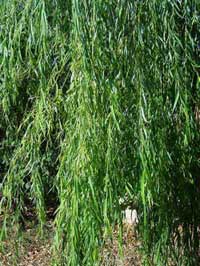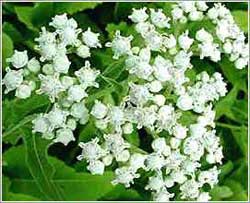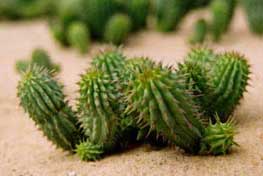Aspirin, a well-known medication today, originated from the white willow tree. As far back as 4,000 years ago, the Egyptians used this plant to combat pain and various ailments. However, it wasn’t until the late 19th century that aspirin was officially developed.
 |
| Willow has been used by doctors since ancient times to alleviate fever (Image: legambientearcipelagotoscano) |
As early as 1550 BC, Egyptian medical texts mentioned the use of white willow leaves to relieve pain. Hippocrates, often regarded as the father of medicine, also recommended using the infusion of willow bark for treatment.
In 1763, the memoirs of English clergyman Edward Stone were published, which noted the use of willow bark to relieve symptoms of malaria.
In 1829, pharmacist Pierre Joseph Leroux boiled willow bark powder, filtered out impurities, and obtained soluble crystals. He considered this to be the medicinal component of the willow and named it salicine (salix: Latin for willow). When tested at Hôtel Dieu Hospital, this substance alleviated fevers, regardless of their origin; however, it had the side effect of irritating the mucous membranes, causing stomach pain.
Charles Frederic Gerhardt was the first to discover a derivative of salicine, naming it acetylsalicylic acid. This was later refined by chemist Felix Hoffmann, with researcher Anthur Eichengrun conducting clinical trials for the treatment of rheumatism, yielding positive results.
Bayer, a German company, validated these findings. In 1899, they registered the drug under the trademark Aspirin. It quickly gained consumer trust, leading to increased sales.
Over the past 100 years, aspirin has remained a widely used medication due to its simple production, low cost, and the ongoing discovery of its numerous benefits: reducing fever, alleviating pain, treating rheumatism, preventing platelet aggregation, and assisting in the prevention of various cardiovascular diseases. Some scientists are currently testing aspirin’s potential to inhibit cancer cell growth.
Annually, 50,000 tons of aspirin are produced worldwide. Spanish philosopher Jor Ortega Onteja y Gasset referred to this era as the “era of aspirin.”
From Ancient Tomb Documents to Artemisinin for Malaria Treatment
In the early 1970s, Chinese scientists discovered ancient texts while excavating famous tombs in Wuhan. These documents described the fever-reducing properties of the leaves and branches of the sweet wormwood plant, also known as Artemisia annua. From this research, they isolated the compound artemisinin for malaria treatment. Building on artemisinin, scientists have synthesized several promising derivatives for treatment.
Artemisinin and its derivatives destroy malaria parasites through a chemical reaction that occurs when they interact with the high iron content in these parasites. This reaction releases free radicals that destroy the parasite’s cell membrane. The drug is quite safe, with minimal side effects at standard doses. When combined with a synthetic antimalarial drug, treatment can be expedited, and the parasites’ resistance develops more slowly, achieving recovery rates of up to 95%.
Cancer cells also contain iron at relatively high concentrations. Consequently, researchers are testing artemisinin for the treatment of certain cancers, showing promise in cases of bone cancer and leukemia.
From Indigenous Knowledge to Quinine
 |
Cinchona tree (Image: motherherbs) |
According to legend, Countess Chinchon, wife of the Spanish Viceroy in Peru, suffered from malaria, which was untreatable until she applied a traditional method used by Indigenous people: boiling the bark of a tree that grows on the Andes Mountains to make a drink. After several doses, she recovered. Upon returning to Europe in 1640, the countess brought this tree back, which later Swedish botanist C. Lime named cinchona, derived from her name.
Another legend suggests that some Jesuit priests learned the Indigenous remedy for malaria in Peru. They brought the bark, later known as cinchona, back to Europe for treatment in 1650.
Although the bark was effective in treating malaria, it faced significant opposition due to religious reasons. It wasn’t until 20 years later that the medical community recognized its efficacy. Finally, in 1820, two Frenchmen, Joseph Pelletier and Caventou, extracted alkaloid compounds from cinchona bark, naming it quinine for malaria treatment.
From Cactus to Weight Loss Medication
 |
Hoodia Gordonii cactus |
The Bushmen tribe in the Southern African desert have passed down knowledge of using the stalk of the Hoodia Gordonii cactus (scientific name: Hoodia Gordonii – family Asclepiadaceae) to stave off hunger and fatigue during long hunting trips in remote areas where food is scarce.
In the 1990s, based on this traditional knowledge, the South African Council for Scientific and Industrial Research began studying the biological activity of the plant. By June 1997, the pharmaceutical company Phytopharm (UK) received permission to harvest and commercialize this plant to produce a weight loss drug known as P57. This medication promotes a feeling of fullness, with negligible side effects.
Dr. Pham Tiep




















































